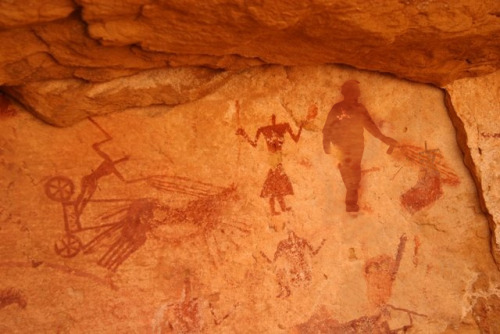From Archaeopop's
environmental desk, here's a roundup of three interesting articles on archaeology and the environment:
1) Via
Ars Technica, a
new paper uses residue analysis to suggest that the advent of farming didn't change everything all at once
A recent paper in PNAS brings some evidence to challenge the prevailing notion that farming immediately and completely changed everything about human society, from diets to economies to tool usage. The authors suggest that hunting and gathering persisted even after farming had been established. They deduce as much from the presence of specific lipid biomarkers left inside ceramic vessels that date from the time that plants and animals were first domesticated.
More evidence that farming was maybe a side-effect of the neolithic revolution, rather than the cause of it. In other words: massive transformation of land use is maybe not necessary for technological advancement.
2) In Low-tech Magazine, Kris De Decker gives us a fascinating look into the
Dutch energy crisis of the 1500s - and its catastrophic environmental effects.
By the time Antwerp came to dominate the world economy, its peat reserves had already been dug out to satisfy the energy needs of Flanders in the course of the preceding two centuries. As a result, peat digging shifted to the neighbouring province of Holland, from where the turf was exported to Antwerp... peat diggers developed a new tool, the "baggerbeugel" (a dredging net on a long pole, there seems to be no English translation for the term). Standing on a small boat or at the waterside, this tool allowed them to cut peat below water level and haul it up. This technique, called "slagturven" (again, no English translation available), greatly enlarged mineable peat reserves...
Worse, however, was the destruction of the landscape and the loss of agricultural land. Wherever the peat was mined below the water table, land disappeared into the waves. This was a rather ironic consequence for a country that spent so much effort reclaiming land on the sea elsewhere on its territory through the use of windmills. Every year, about 115 to 230 hectares of land was lost as a result of peat production below the water table. The exhausted peat bogs formed lakes that expanded to cover vast areas throughout Holland and Utrecht.
3) From Science News: was the
Little Ice Age the Native American revenge for all those diseases?
More research that suggest that the 'pristine' North America found by European settlers was caused by disease rather than some innate Indian rapport with 'nature'.
By the end of the 15th century, between 40 million and 100 million people are thought to have been living in the Americas. Many of them burned trees to make room for crops, leaving behind charcoal deposits that have been found in the soils of Mexico, Nicaragua and other countries. About 500 years ago, this charcoal accumulation plummeted as the people themselves disappeared. Smallpox, diphtheria and other diseases from Europe ultimately wiped out as much as 90 percent of the indigenous population. Trees returned, reforesting an area at least the size of California, Nevle estimated. This new growth could have soaked up between 2 billion and 17 billion metric tons of carbon dioxide from the air.
And thereby cooled the earth enough to cause a century of cold in Europe. I covered this line of research - which I find very persuasive - in
a January article that you should read!
Hope you all enjoyed the non-end-of-the-world on 11/11/11/11:11.




